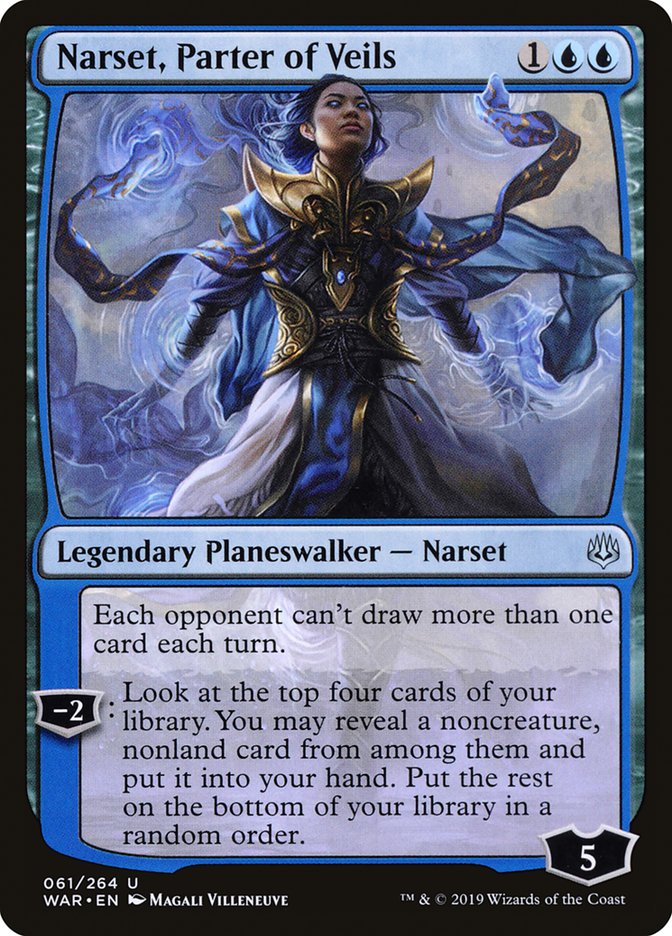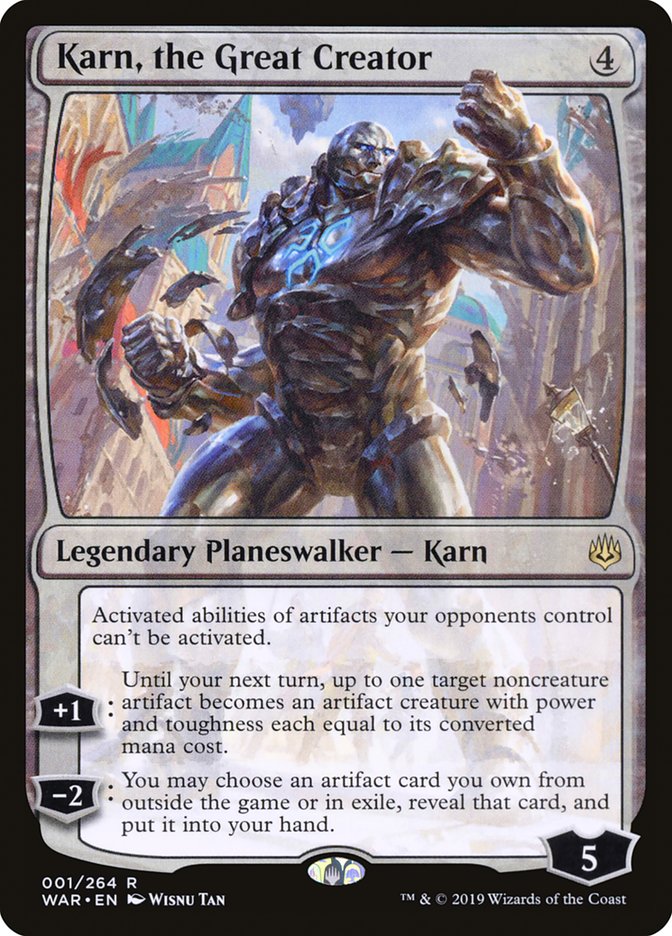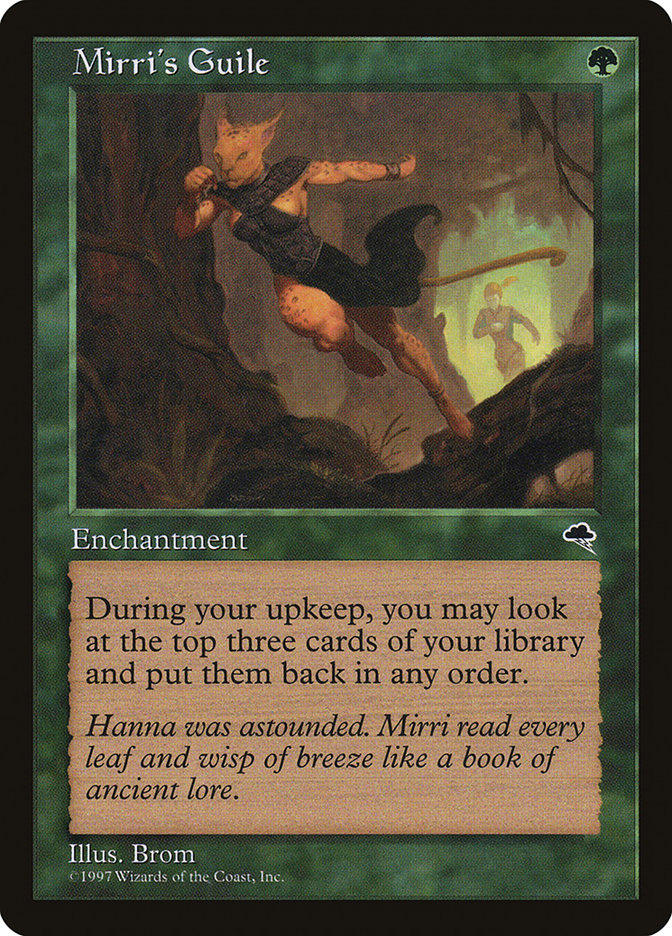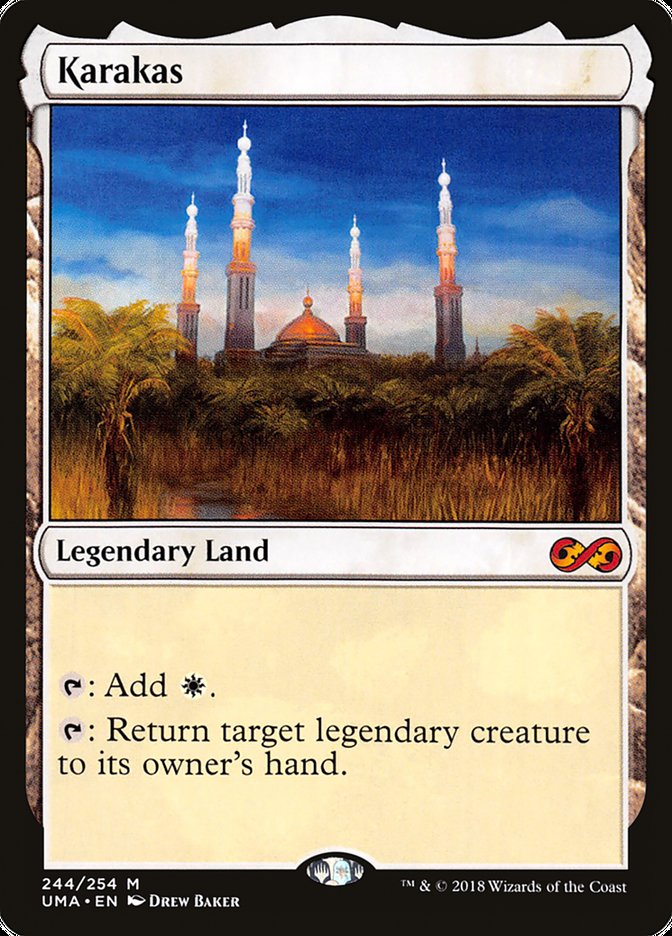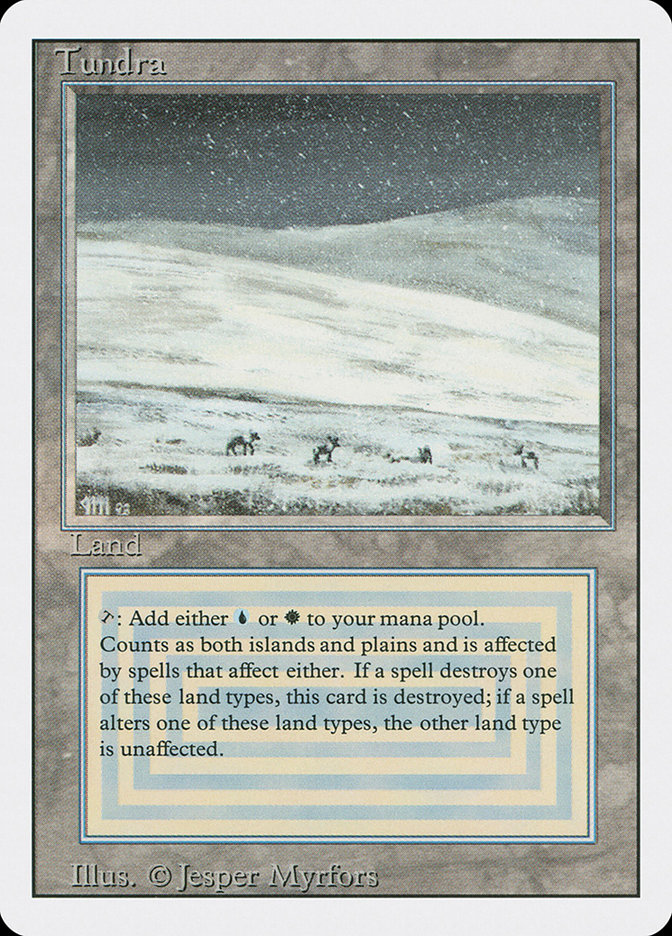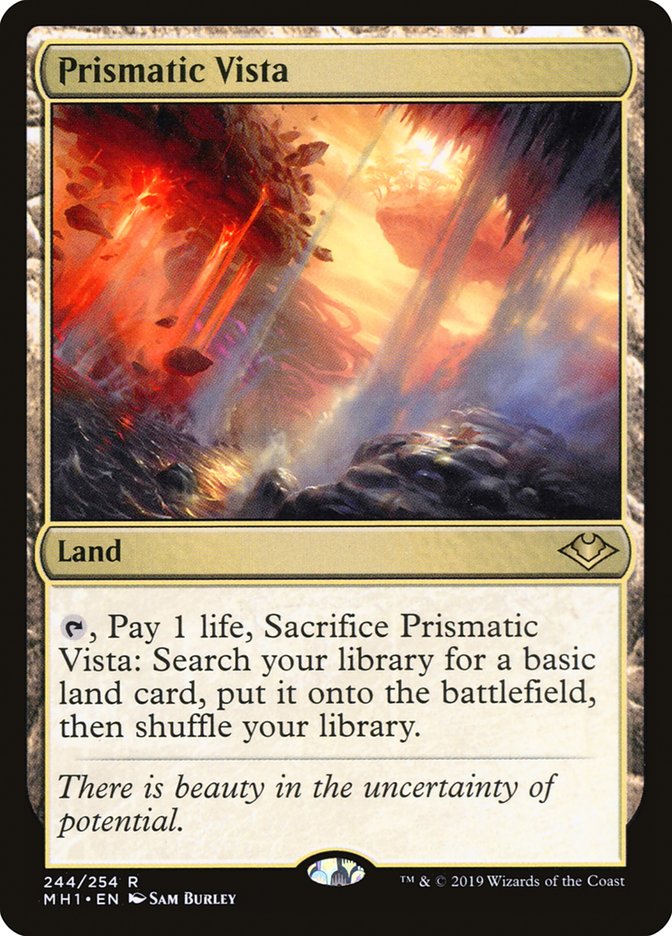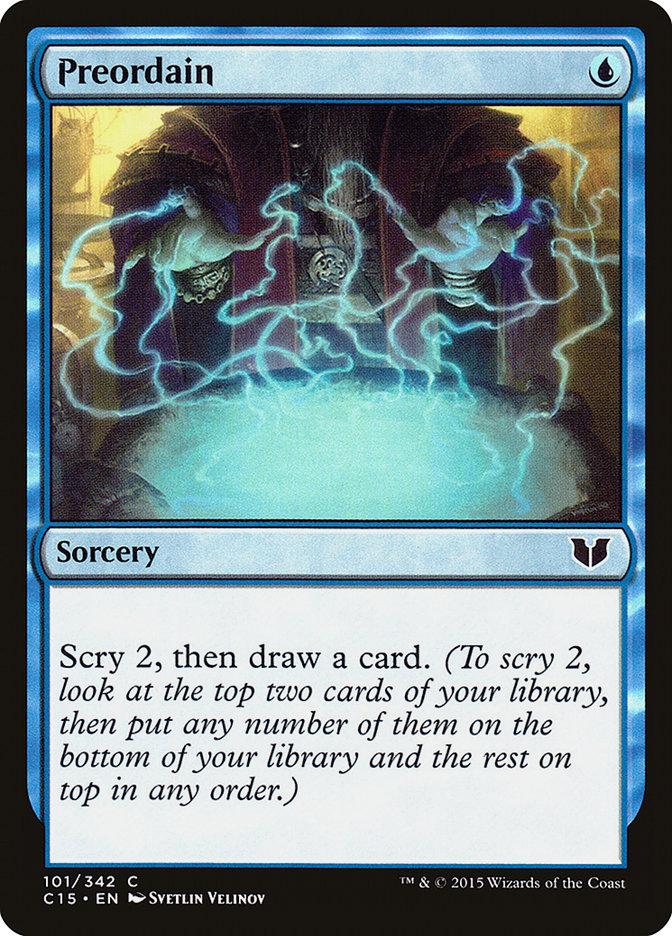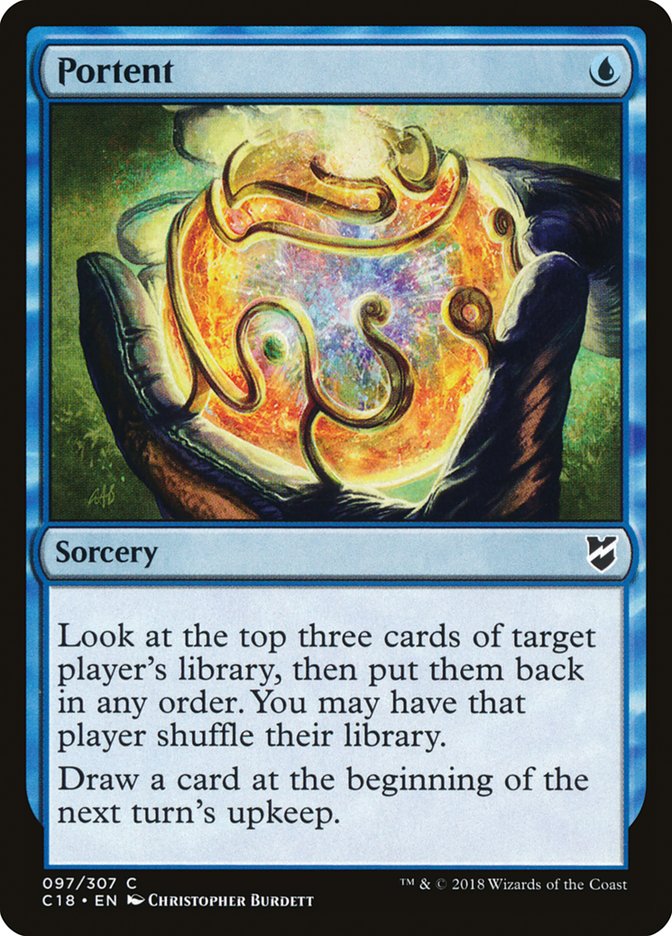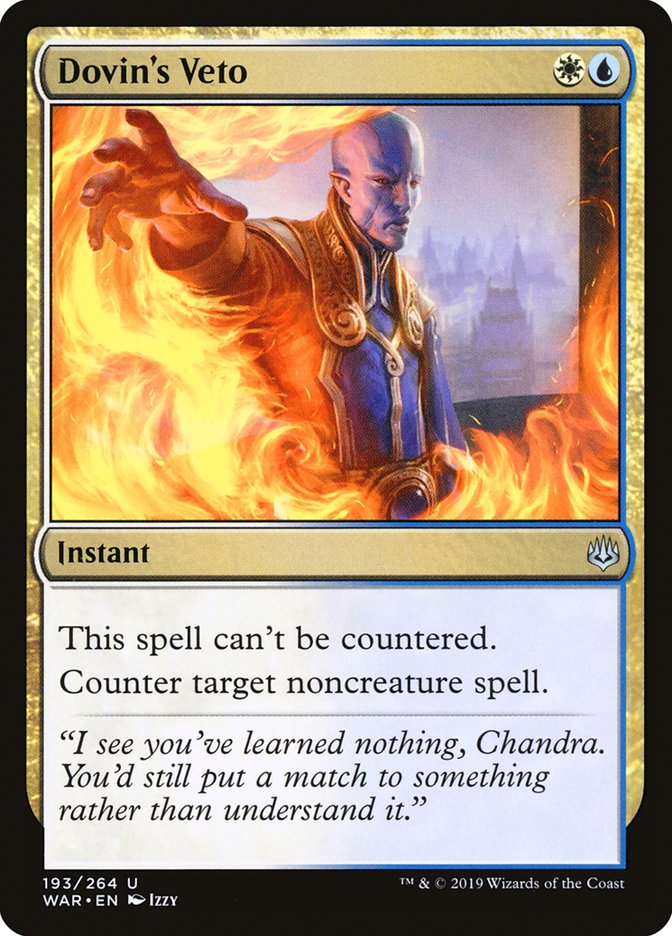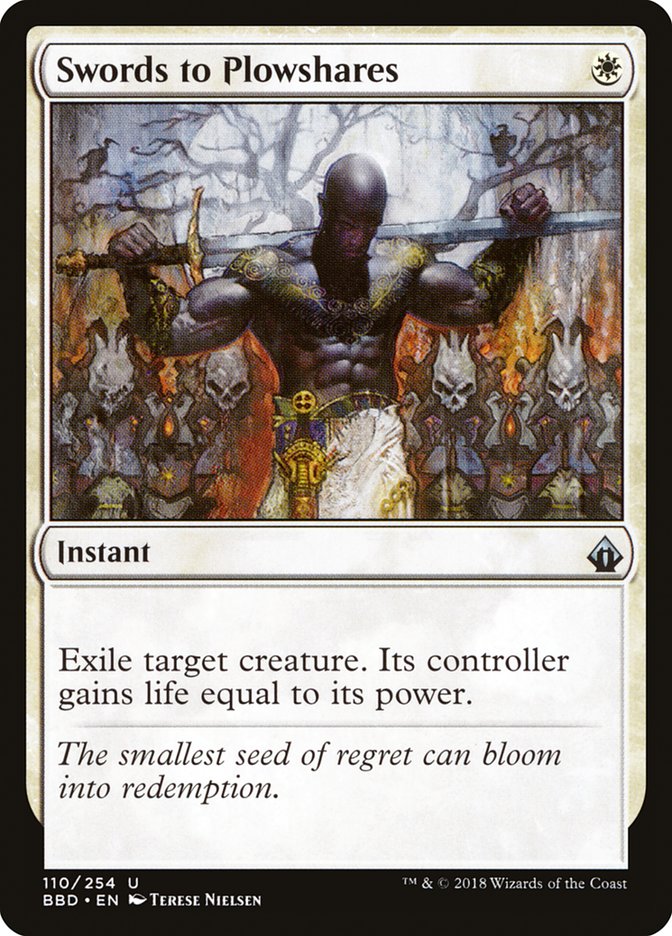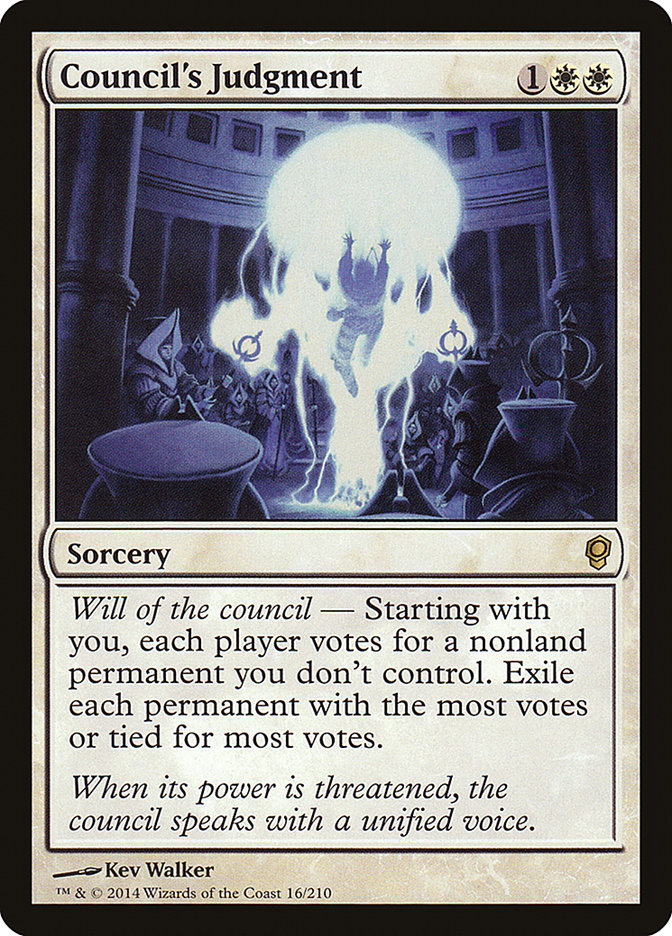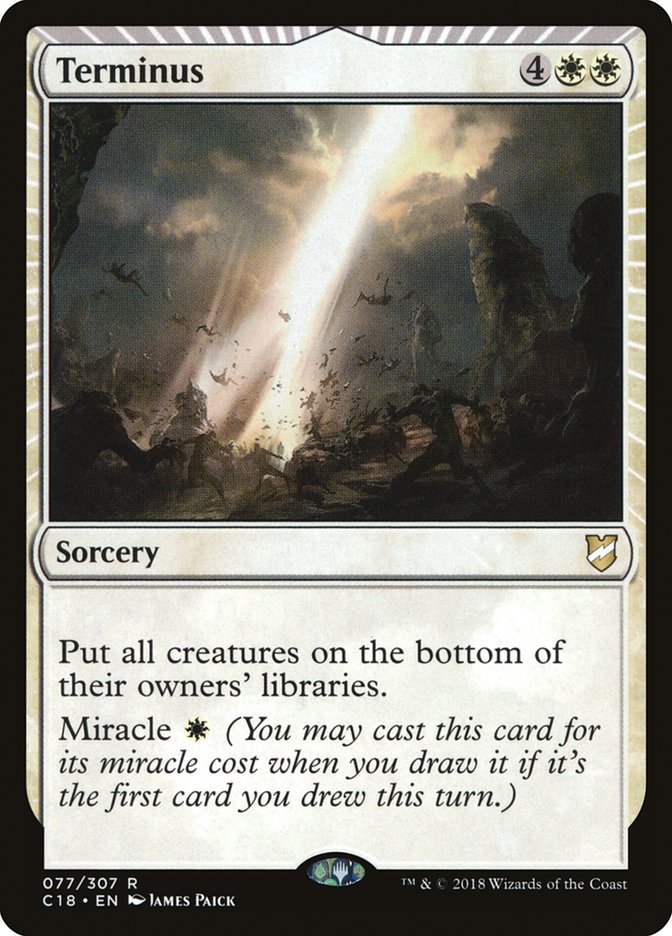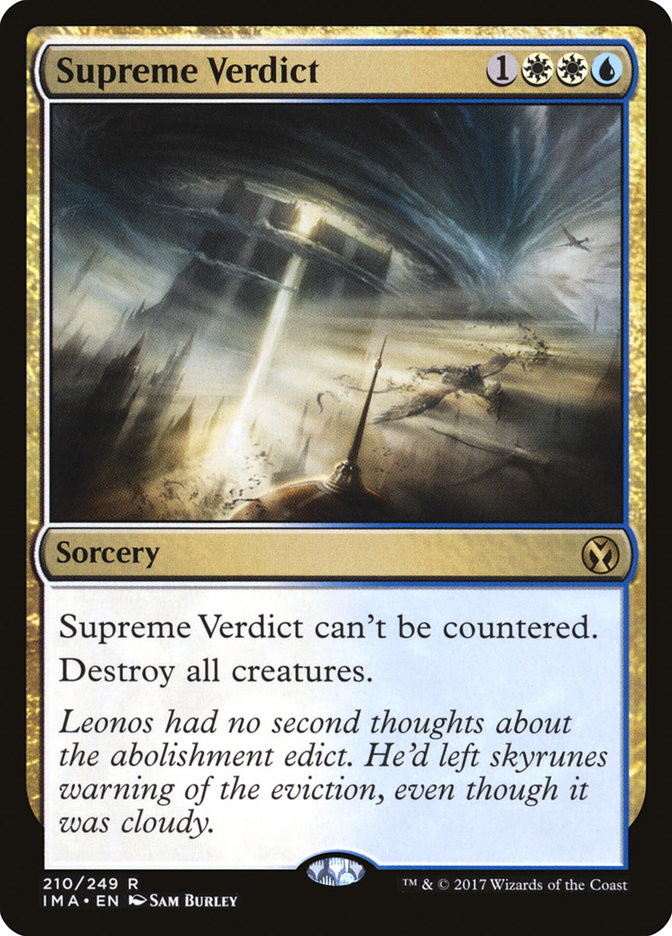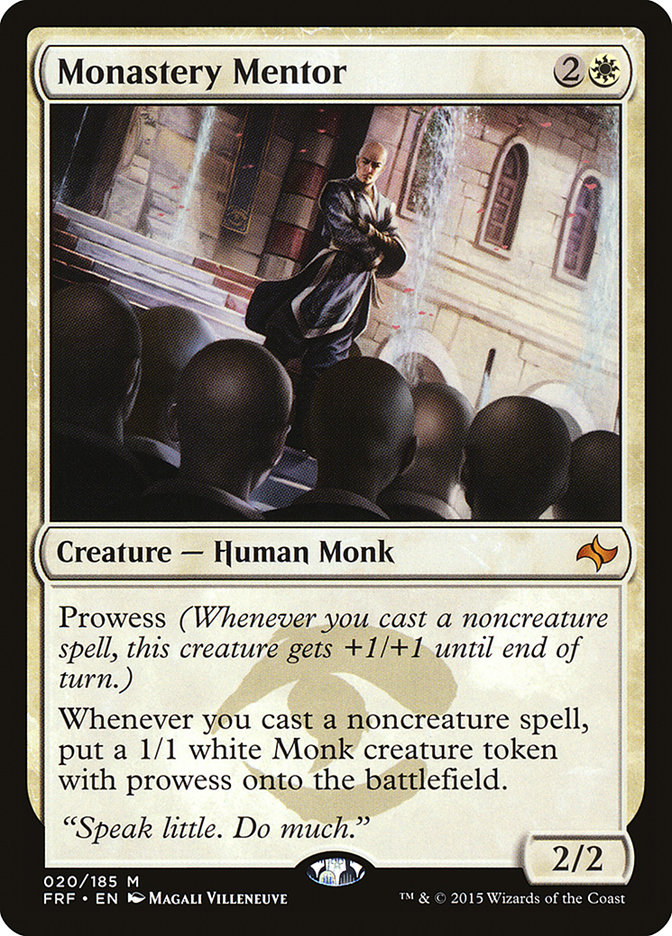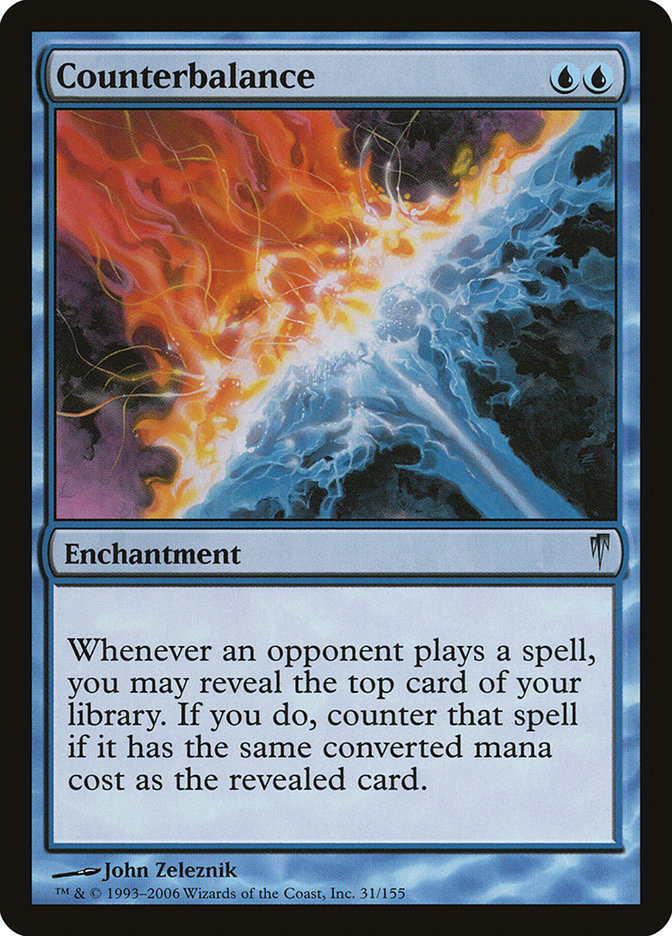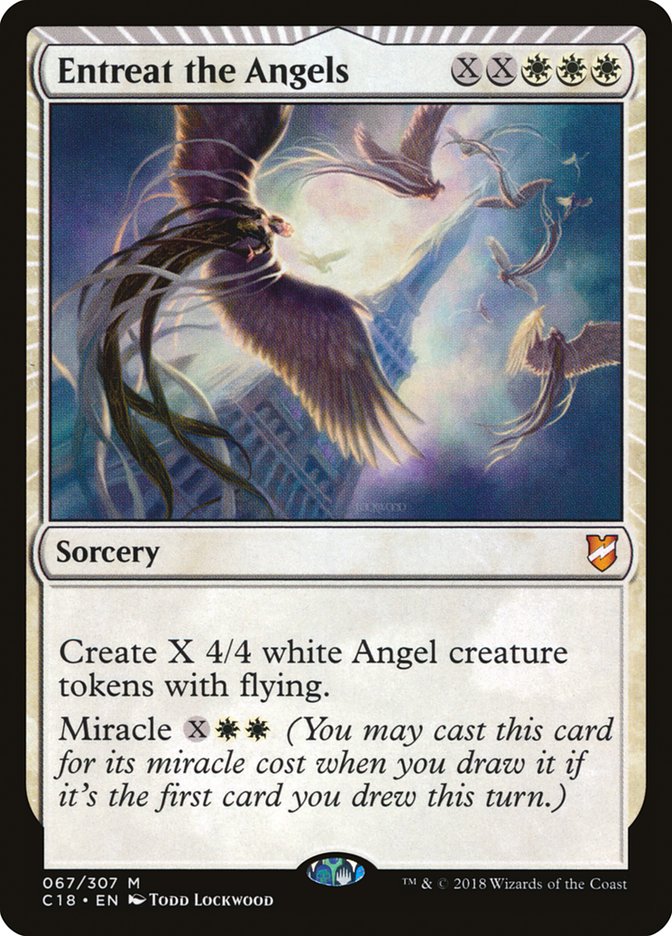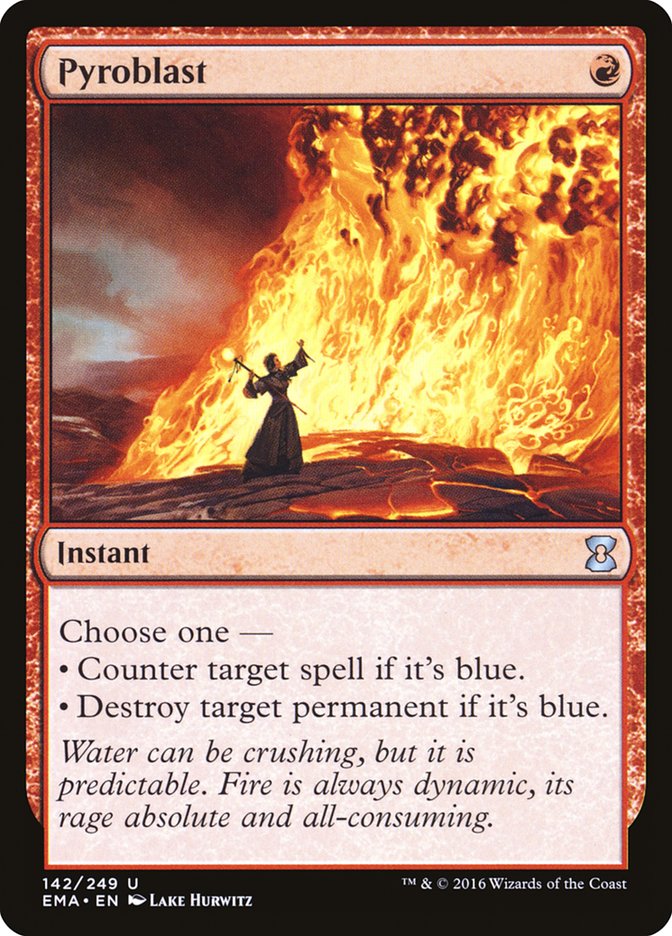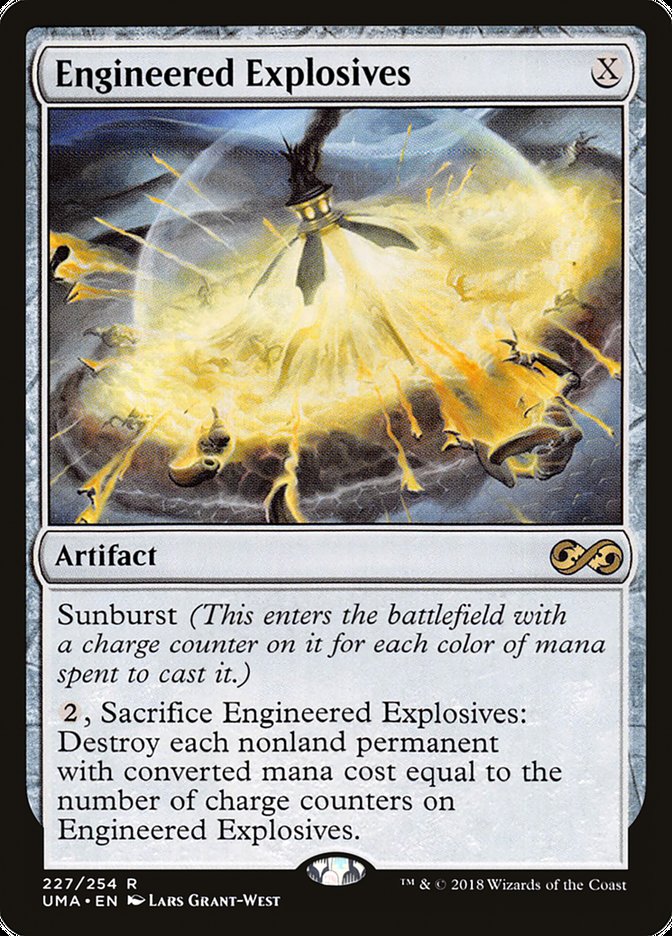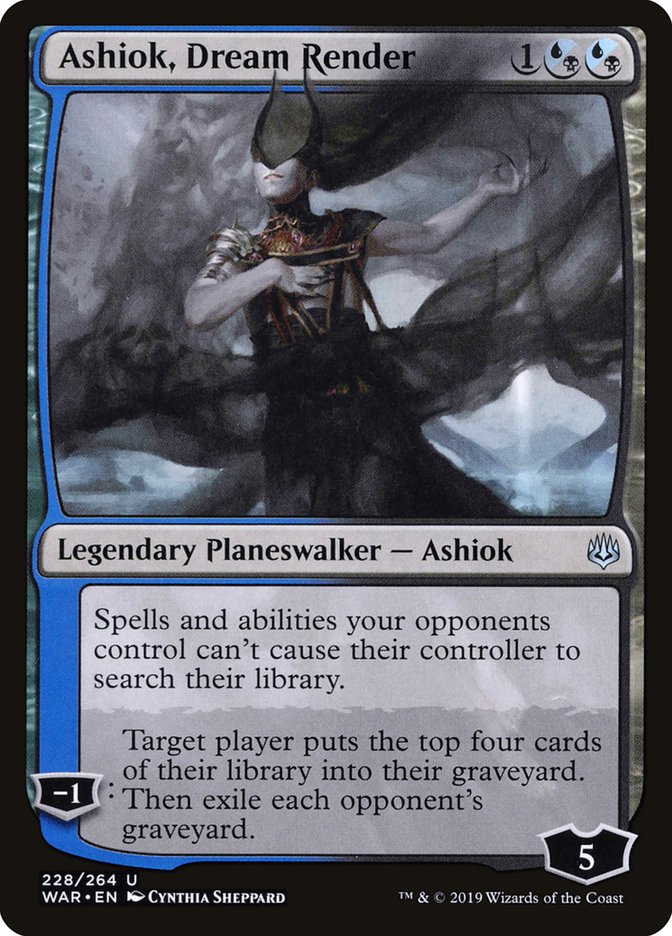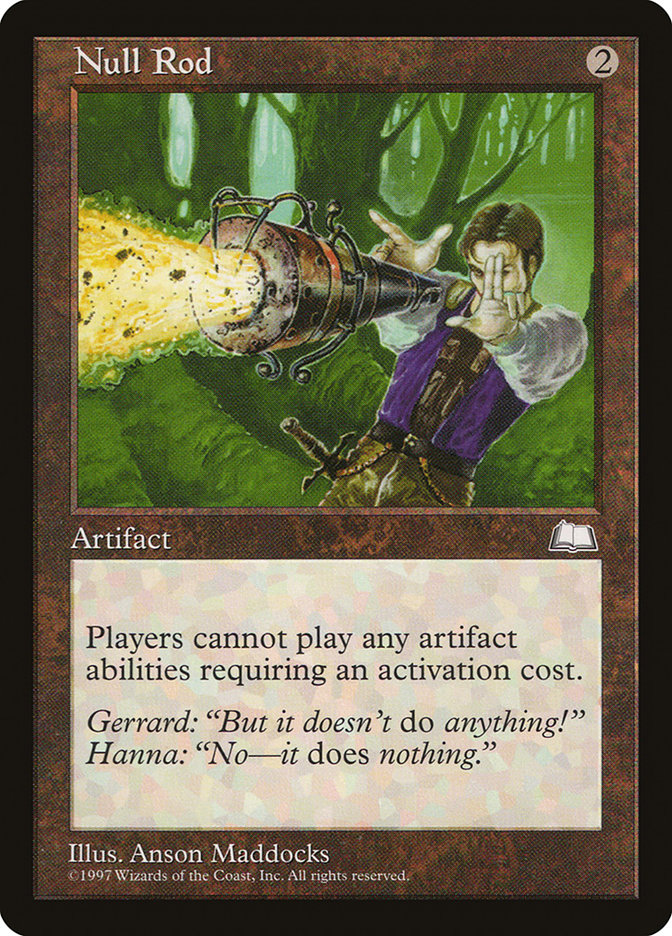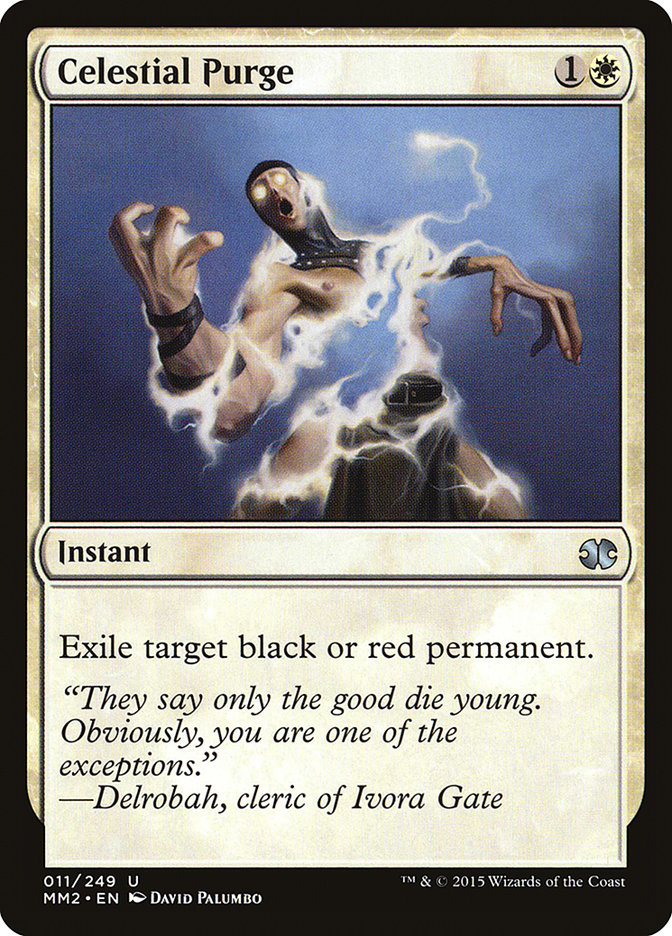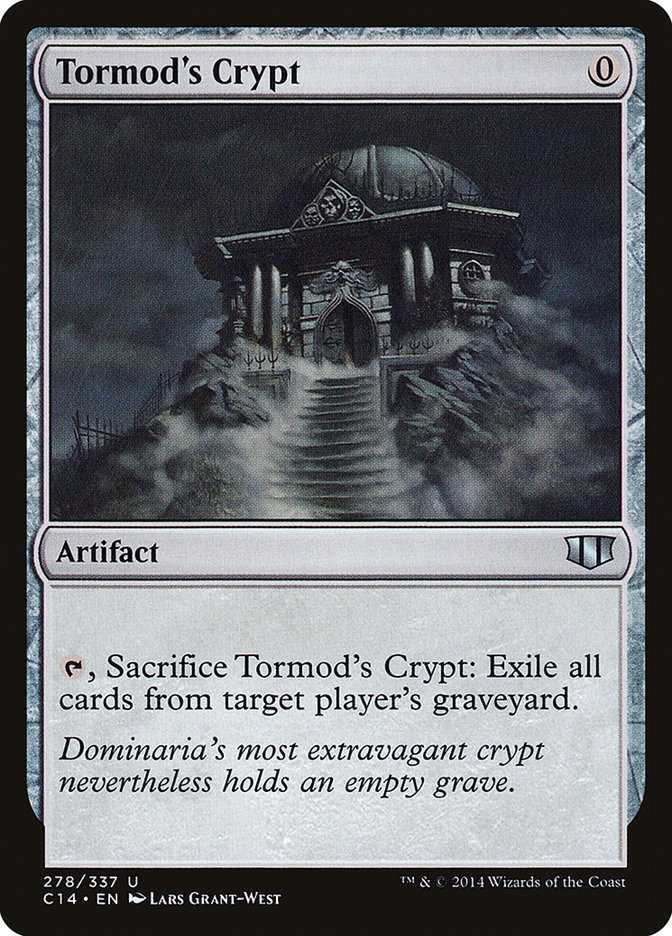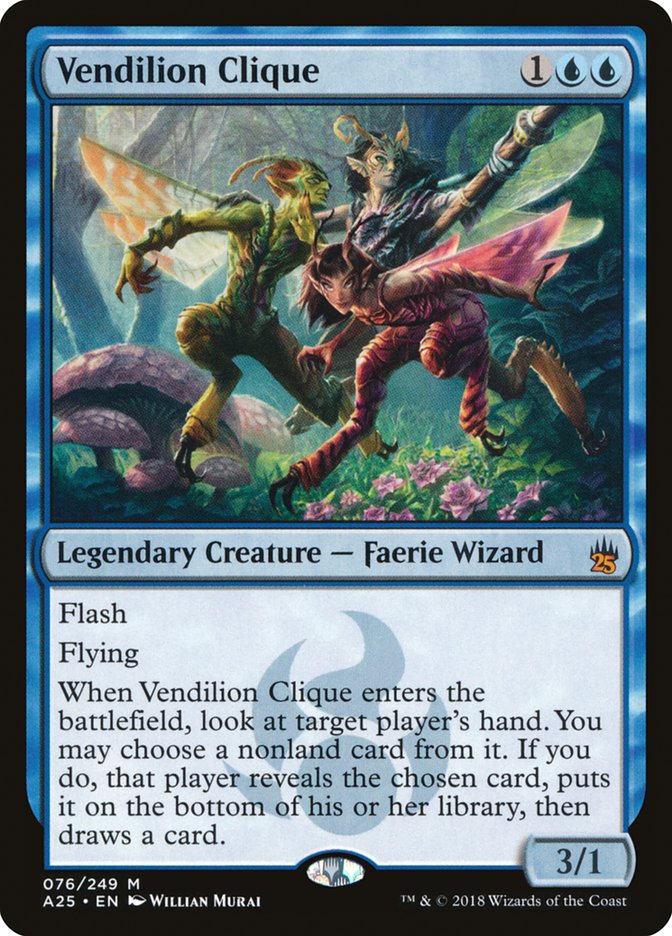It’s a new era in eternal Magic. War of the Spark brought some incredibly powerful effects at aggressive mana costs and they’re making their presence known from Standard all the way back to Vintage. Modern Horizons is dropping imminently and adding a ton of new cards to the card pool. On top of all of that, the London Mulligan is confirmed and going into effect with the Core Set 2020 release.
Vintage and Legacy got the spotlight put on them this past weekend at SCG CON Summer. The Vintage Power 9 Series was the first big, sanctioned, paper Vintage event since Eternal Weekend last November. Legacy hasn’t had a big paper event since GP Niagara, when War of the Spark was not yet released. SCG CON Summer doubled down and had the Team Eternal Showdown where both formats got to come back for a second round of action.
I can tell you from the front lines, the War of the Spark planeswalkers are not only present in Legacy and Vintage but currently defining the rules of engagement in both formats. Eternal Magic could easily be rebranded “Duel Decks: Karn vs. Narset” and nobody would argue. In Vintage, Narset, Parter of Veils is oppressive and probably too good to stay unrestricted. But I believe Karn, the Great Creator truly breaks the format (in the bad way). When a deck can resolve Turn 1 Trinisphere and then win the game on Turn 2, something is wrong.
Modern Horizons will not help the format and my prediction is that the set will just superpower Dredge with its new free spells and the obviously-busted-why-did-they-print-this Hogaak, Arisen Necropolis. Hopefully this will light a fire under Wizards of the Coast to overhaul the Vintage Restricted List and I wouldn’t mind seeing the format explode and rebuild from the ground up. Until then, I’ll be keeping a safe distance from that format for a while.
Good thing we’re here to talk about Legacy!
Legacy is experiencing a significant metagame and philosophy shift in the post-War of the Spark world, and the rules of engagement have changed. Here’s my rundown of the big three new players:
Narset, Parter of Veils is a 1UU Dig Through Time (a banned card) stapled to Leovold, Emissary of Trest (a card that costs three different colors). Legacy decks have been warping their manabases trying to make Leovold castable since he was printed because “Opponents can’t draw extra cards” is game-breaking. For Narset, one only needs Islands. Narset starts at five loyalty and her activated ability costs two loyalty, so even after her controller has refilled their hand with their best two spells from the top eight cards of their deck, she remains on the battlefield at one loyalty to continue denying extra cards to the opponent.
Legacy is built on seeing lots of cards to sculpt powerful hands and increase options throughout each game. If only one player gets to do that, the game is going to be a one-sided affair. Narset is an easy inclusion in any blue control deck. She does two things control decks wanted to do anyway and is easily castable in any blue-based color combination.
Karn, the Great Creator is a one-card combo with itself. Karn turns off activated abilities of opposing artifacts and Karn gets cards from your sideboard. A savvy deckbuilder will put Mycosynth Lattice in their sideboard to make all cards into artifacts. Thus, anyone with access to four and then six mana (or ten all at once) can make it so their opponent can’t activate any of their cards (this includes tapping lands for mana). And just in case you were counting on Force of Vigor to save you, Mycosynth Lattice turns all cards in all zones colorless, so you’ll never have a green card to exile for it. Sorry.
Big mana colorless decks have always been players in Legacy, as Ancient Tomb and City of Traitors are powerful engines. Grim Monolith and Voltaic Key are old friends from the busted Urza block days and Cloudpost has Vesuva and Glimmerpost to power out big things quickly. These were already playable decks with Chalice of the Void, Lodestone Golem, and Eldrazi creatures. Karn catapulted these fringe archetypes straight to Tier 1.
Teferi, Time Raveler is a one-sided super Defense Grid that replaces itself while dealing with a troublesome permanent. If he sticks around, he also turns all his controller’s sorceries into instants, so one player only has two phases of each turn cycle to cast spells (their first and second main phases), and the other adds extra opportunities to cast spells when they shouldn’t be able to cast them. Additionally, all those extra spells are going to resolve because the opponent can’t respond. In Legacy, almost every deck needs to operate at instant speed at least a little bit to function correctly. This disparity quickly ends games.
Those are the big three and what they bring to the table. It all sounds pretty messed up – what is a deckbuilder to do about all these powerful cards? Is there a deck that can leverage two of these cards while beating the other? We’re going to need… a Miracle!
Creatures (5)
Planeswalkers (6)
Lands (19)
Spells (30)

Miracles has been one of the best decks in Legacy since Terminus was printed. It’s the deck that got Sensei’s Divining Top banned, it didn’t go anywhere after it lost it, and it has continued to adapt and take many forms over the years.
The deck has historically tried to answer everything an opponent did with Top plus Counterbalance and then win at its leisure with Snapcaster Mage or Entreat the Angels when the opponent was an empty pile of dust. The deck got really weird for a while as people kept trying to force that gameplan to work without Top. I played against Miracle guru Anuraag Das (anzi104 on Twitch) in the SCG Duel for Duals last summer and he had Soothsaying in his deck. Some people went Bant for Mirri’s Guile.
Jim Davis wrote an article in early 2018 touting the wisdom of cutting the dual lands, focusing on a basic-heavy manabase, destroying opponents with Back to Basics, and playing with a more aggressive plan that controls the early turns then crushes the opponent quickly with Monastery Mentor as soon as there was some breathing room to make the move. I played his list to a gut-wrenching ninth place on breakers at the 2018 SCG Cincinnati Legacy Classic, kept working on it, and ran it back to a first-place finish at the 2018 SCG Baltimore Legacy Classic a month later. I have continued developing and championing the straight Azorius manabase and the aggressive Mentor endgame since that time. Narset and Teferi both fit right into this shell and Karn decks fold to Back to Basics.
Last weekend at SCG CON Summer, I went 12-3 with this list on my way to the Top 16 in the Play 4 Power and Top 4 in the Team Eternal Showdown. My only losses on the weekend were to legendary creatures Harlan Firer on Izzet Dreadhorde Arcanist, David Long on Golgari Depths, and Gerard Fabiano in the mirror.
I believe Miracles is back to being the best deck in Legacy.
The Lands
This is the most defining part of this build and the entire reason to go in this direction. Nine basics and eight fetchlands to get your basics, one Tundra, and one Karakas. In most situations you should be able to play an entire game without giving your opponent a target for Wasteland. Delver, Death and Taxes, Maverick, Eldrazi Stompy, and Loam decks all rely on being able to Wasteland their opponent off the resources they need to play the game and other decks use Blood Moon to the same end. Just by having a deck full of basic lands, you get to blank four to ten cards in many decks you’ll come up against. Plus, you have the looming threat of Back to Basics in your deck. Not only are you immune to their mana denial, you have a mana denial plan of your own that the opponent must respect.
The one Karakas can be a third Plains if your local metagame has a lot of Wasteland and not a lot of Reanimator, Show and Tell, and/or Control, but I have found the exposure to Wasteland to be worth it to include Karakas in the maindeck.
Finally, there’s the one Tundra. I have a serious hate-hate relationship with that Tundra. I have been hurt in a lot of games by having an opening hand with Ponder and only Arid Mesa, which does not fetch basic Island. Likewise, I’ve been punished many times by needing white mana and only having a Scalding Tarn, Misty Rainforest, or Polluted Delta to go get it. This has created tension in the past because you need the Tundra for those situations, but you’re never happy about exposing yourself to land destruction in your deck built to ignore it.
Because of this, I think I was the most excited person on the internet when Prismatic Vista was previewed from Modern Horizons. This card is Flooded Strand five through eight in my deck, as I’ll never be stuck with an Arid Mesa / Ponder hand again. I’ve said 1,000 times since picking up this deck that I wish I could build it without the Tundra and go pure basics, and while I’m not sure if Vista is quite so good that we can cut the Tundra entirely, it’s very close and I will be testing mono-basic mana as an option.
The Engine
Brainstorm and Ponder are automatic four-ofs in any Miracle build. They are the best at what they do, and what they do is give you lots of choices of how to sculpt your gameplan starting as early as Turn 1. It might be a slight exaggeration to say I keep any hand with Island plus Ponder in it, but that is very close to the reality of how important Ponder is to this deck.
The other cantrips and card draw spells vary between builds. Common options include Accumulated Knowledge, Predict, Preordain, and Portent. I went with Preordain and Portent as one-ofs in my build. I’m playing nineteen lands, which is fewer than most control decks in Legacy, so I want my cantrips to cost one because it’s frequently their job to find me more lands.
Preordain is the objective best option after Brainstorm and Ponder and is an easy choice. Portent might look weird to those who don’t know this deck well, but it’s a clever innovation that came out after Sensei’s Divining Top was banned. Portent looks at the cards now but draws a card on the next turn, which leads to a lot of spicy Terminus flips on your opponent’s upkeep.
Portent fell out of favor for a while and was replaced by Accumulated Knowledge as a draw engine that buries control mirrors in the long game, but Narset put an end to all that. Spending two mana to draw one random card is a lot worse than spending one mana to select from a number of options. Critically, Portent’s “slow-trip” of drawing the card on your opponent’s upkeep also dodges Narset’s “only draw one per turn” rule, since the opponent’s upkeep is a new turn. Portent isn’t pretty, but it’s an important role-player in this list.
I tried Sleight of Hand in the Portent slot briefly as a way to access a new card right away even if an opponent has Narset, but the option to flip Terminus with Portent put it over the top for me.
The Counters
The gameplan of Miracles is, loosely, as follows:
- Turns 1-3: Don’t die.
- Turns 4+: Win somehow.
So it’s important to have a lot of efficient counterspells that make sure you survive the early turns. Force of Will is the poster child of early-game interaction in Legacy, and that’s an easy four-of.
Spell Pierce might seem weird in a deck that wants to play a long game, since eventually opponents will just be able to pay the extra two mana, but it’s essential in those first three turns to buy the breathing room to get your plan off the ground. Spell Pierce gets the spot over Flusterstorm because of planeswalkers and Chalice of the Void. That versatility is more important than raw power in the maindeck.
You need to be very careful on your first turns not to get hit with anything that will hamper your plan. If I have an opening hand of one land plus Spell Pierce and Ponder, I will play my land and hold up Pierce rather than Pondering on Turn 1. The temptation to find the second land is high, but getting hit with a Thoughtseize, Chalice of the Void, or Hymn to Tourach is usually worse than missing your second land drop. Plus, you still have your draw step and Ponder to find it on Turn 2. Being patient will reward you more often in this deck.
Dovin’s Veto is the natural extension from Spell Pierce. If we’re scared of planeswalkers, discard spells, prison permanents, and combo payoffs but Spell Pierce doesn’t hold up well in the late-game, an uncounterable Negate in the deck is a strong second line of defense. A common question I get about Veto is if it is better than actual Counterspell. Miracles already excels at dealing with creatures – my build is especially brutal on creatures because I already want to protect my planeswalkers – so it’s just spells we’re worried about. Additionally, in the basic-heavy manabase, UU can be hard to leave up reliably. It’s common to Swords to Plowshares on Turn 1 (need a Plains), play an Island Turn 2, cast a cantrip to find your third land Turn 3, and in that line you won’t even have UU as an option to leave up until Turn 4, but you could cast Veto on Turn 2 or 3 along the way. When you don’t have dual lands to smooth colors out, WU is an easier mana cost than UU. If you are inclined to play the Jeskai builds of Miracles that have lots of dual lands, Counterspell might be better.
Now that Modern Horizons is available, I’m going to start by cutting one of the Vetos for a Force of Negation. I like how clean of an answer Veto is, but two mana is pretty slow against some of the threats that come at you in Legacy. Having a fifth zero-mana interaction spell will cut down games where you get cheesed out before setting up.
The Removal
Swords to Plowshares is the most efficient removal spell ever printed. This deck does not care about the opponent’s life total. Jace wins without combat and Monastery Mentor scales damage exponentially and can realistically close a game with an opponent at 50+ life.
Council’s Judgment is a clean catch-all for any troublesome permanent. Noncreature cards like Chalice of the Void, planeswalkers, Choke, and Batterskull all fall to the Will of the Council. Judgment also doesn’t target, so it can clear out Emrakul, True-Name Nemesis, Reality Smasher, Mother of Runes, and other sticky creatures.
Terminus brought this archetype to life. It’s a one-mana Wrath of God that ignores indestructibility, doesn’t trigger “dies” effects, and can be cast at instant speed with a little bit of work. The power of Terminus is truly pretty gross. It always feels great when you’re able to manipulate your deck into a big Terminus, but it feels even better to just flip one off the top in your draw step. My strategy for handling opponents who tilt off about a blind-flipped Terminus is to deadpan “It’s a miracle.” and just continue with my turn.
Supreme Verdict isn’t in every Miracles maindeck. The way I’ve constructed this build is to be extra hateful on creatures so my planeswalkers can stay on the battlefield as long as possible and I can worry about problematic spells with my countermagic. If you have to Force of Will every threat they cast, you’ll run out of gas really quickly. If you can save your counters for their planeswalkers and sweep the battlefield of creatures every few turns, you’ll have a lot more success. Remember – your life total is a resource and there are no bonus points for winning at twenty life. Take some hits, find the sweeper, and save your counterspells for important things. Patience is a virtue.
The Threats
Narset, Parter of Veils is card advantage and a lock piece against every deck that wants to draw cards (which is most of them). The craziest thing about Narset is that, as nuts as she is, she’s also a bait spell in this deck. If she resolves, she’ll bury the opponent in cards. If she doesn’t, the opponent has one less counterspell for the next threat you slam onto the battlefield.
Teferi, Time Raveler is the ultimate counterspell test. When he goes on the stack the opponent has no choice but to counter him, because once he’s on the battlefield they’ll never counter anything again. When Narset resolves, there’s the tickling question of whether they’re saving the Force of Will for Jace. When Monastery Mentor resolves, there’s room to wonder if they have Pyroblast or Spell Pierce that can hit your next threat. There are no mysteries left when Teferi goes on the stack. The opponent must go for broke and try to keep him off the battlefield or else you’re just going to parade planeswalkers and Monks with impunity for the rest of the game.
Teferi’s +1 ability is at its best in Miracles too. Casting sorceries any time you could cast an instant is a big deal in a deck that contains Terminus. I’ve cast Council’s Judgment to remove an Omniscience in response to my opponent’s Cunning Wish. I’ve cast Ponder into Terminus on my opponent’s combat step. I’ve cast Preordain to find Supreme Verdict in my own end step after my opponent put a scary creature onto the battlefield with Aether Vial. I beat Dredge Game 1 last weekend with zero graveyard hate because I was able to Judgment, Supreme Verdict, and Terminus them in their draw and combat steps to completely run them out of Ichorids and Bridges from Below. Sorceries tend to have more powerful effects than instants at the same mana cost, which is why they come with the restriction that they can only be cast on your turn. Cheating that parity by untapping with Teferi will quickly snowball into a victory.
Jace, the Mind Sculptor hasn’t been forgotten in the new world. Jace is still your go-to end-game value machine. The most common route to victory is resolving Jace and using him to draw cards until you can cast and protect a Monastery Mentor for a turn. If you’re out of Mentors (it happens), Jace’s plus ability is a completely viable win condition.
Snapcaster Mage is not the most glorious win condition, but it does have power and toughness and a nonzero number of games will end with Snapcasters attacking for twenty. This is especially relevant in combo matchups. It’s important to keep track of how you’re using your Snapcasters early in the game. The deck only has seven cards in it that can actually win a game (three Snapcaster Mages, two Monastery Mentors, two Jaces). If you trade off a Snapcaster early, or pitch one to Force of Will, that’s one less way to win left in the deck. There is no way to get a creature back from the graveyard once it’s there. Those plays are going to happen, that’s what Snapcaster is for, but don’t lose track of your win conditions along the way. It’s pretty embarrassing to deck yourself when you have the game otherwise completely under control (that’s coming from experience).
Monastery Mentor is the monster that makes this build of the deck work. You don’t need to grind your opponent into nothing; you just need to sneak this game-ending three-drop onto the battlefield at some point along the way and they will have to hemorrhage resources answering it or just lose to it. Mentor also gives you hyper-aggressive lines that other control decks don’t have. Sometimes your hand will just have a Mentor and two counterspells on Turn 3 and it’s go time. If your opponent was stacking up Spell Pierces and Pyroblasts to fight off your planeswalkers, or if they sideboarded out most of their removal, the game could effectively end on Turn 4.
While we’re talking about Monastery Mentor, let’s talk about the word “control” in context of Magic. Many people think of control as counterspells. Control means Islands. Control means making sure your opponent never does anything. I like to think of control as my actions dictating the options my opponent has. A creature like Monastery Mentor demonstrates considerable control over any game it is part of. When it arrives against a fair deck, their entire gameplan has to become answering it. If they spent resources early on to prepare for Narset and Jace, they’re going to have to spend more resources to undo all that work and try to find an answer for Mentor instead.
When Mentor arrives against a combo deck, they must try to go off right now, ready or not. Keep Mentor’s role and battlefield presence in mind when you play it. For example, on Turn 4 against a combo deck, I will jam Mentor if my hand has Force of Will and Flusterstorm because they’ll be priced into going off that turn into my wall of counters because Mentor closes their window to sculpt a safe path. Conversely, if my hand isn’t full of counterspells early on, I’m going to keep the Mentor in my hand and let them think they need to keep sculpting. If I cast Mentor when my hand can’t answer their combo, I’ve just formally invited my opponent to go off on me when I’m not ready.
Mentor has a lot of raw power and toughness output, but it has even more power in its presence. Being a nonblue creature threat in the otherwise blue spell deck gives the card a lot of leverage over your opponent simply by existing and learning how to pick your spots to deploy Mentor will translate directly into match wins.
Notable Exclusions
I was cold on Counterbalance even before War of the Spark because it’s hard to set up correctly without Sensei’s Divining Top. Every cantrip you cast must not only consider what card you want to draw, but what card your opponent is likely to play next. If you chose wrong, your opponent’s spell resolves and you made your cantrip awkward for nothing. In today’s world with planeswalkers everywhere, the average converted mana cost of a spell you want to counter has gone up considerably. Every non-Jace threat used to cost one or two mana. Now they cost three and four. How many three- and four-drops can you put in your deck to have Counterbalance be reliable? I certainly haven’t figured it out.
Monastery Mentor does the same thing but better. This build already has a number of considerations to the planeswalker metagame. I’m playing a Portent over a second Preordain as a hedge against Narset. Why would I play a win condition that is completely uncastable against an opposing Teferi?
I talked at length about the appeal of being straight Azorius in the mana. There’s also considerable appeal to being Jeskai and having access to one of the best sideboard cards in Legacy. If I knew I would only be playing control mirrors, I would add the dual lands and play Pyroblast, but I firmly believe against an open field, I’d rather have the stability of basic lands and two colors to push through the variety of decks every Legacy event presents.
The planeswalkers have to go somewhere, so they eat up all the flex slots the deck used to have. As far as I’m concerned, this deck starts with the Mentors and planeswalkers and everything else is a flex slot. Anything “cute” or matchup-dependent just doesn’t cut it with Narset and Teferi as options.
Sideboard
The sideboard is heavily variable based on your expected metagame. The only cards I’d lock in are two Flusterstorm, two Surgical Extraction, one Vendilion Clique, and one Disenchant. For the rest, your mileage may vary. Some of my choices may seem strange.
This card has been deceptively insane. I tried Ashiok mostly as a joke at first, but Ashiok has overperformed again and again. Ashiok straight-up dunks on Storm, Reanimator, Dredge, Loam, and any Green Sun’s Zenith deck. Ashiok is also a one-sided Blood Sun that blanks Snapcaster Mage in control mirrors. At this point, I’ve found it easier to keep track of matchups I don’t bring Ashiok in rather than matchups I do.
The big mana Karn decks are the reason we’re playing Back to Basics. Some of the ways those decks can break out of Back to Basics include Ratchet Bomb, Thran Dynamo, Grim Monolith, Voltaic Key, and Candelabra of Tawnos. Don’t do all that work to lock them down just for them to sneak out with some tricksy artifact. Null Rod has significant splash damage versus Death and Taxes and Storm as well, turning off Aether Vial, equipment, Lotus Petal, and Lion’s Eye Diamond.
Marit Lage; Liliana, the Last Hope; Liliana of the Veil; Gurmag Angler; Blood Moon; Dark Confidant; Chandra, Torch of Defiance; Young Pyromancer; Dreadhorde Arcanist; Sneak Attack; Goblin Rabblemaster; Death’s Shadow; Eidolon of the Great Revel; Sulfuric Vortex… there are a lot of red and black permanents that will give you fits if they aren’t answered. I’ve been playing Celestial Purge for a long time now and have never been underwhelmed by the utility.
This might seem weird compared to Surgical Extraction in a Snapcaster Mage deck. The reason I split to one Tormod’s Crypt and two Surgicals is discard spells. Many of the decks that care about their graveyard are also pretty good at making you discard your hate cards before you get to use them. Crypt gets to sit safely on the battlefield and make them do gymnastics to get around it.
This one isn’t weird – I just want to talk about how sick it is with the new planeswalkers and Karakas. Clique plus Teferi and Karakas is an uncounterable, uninterruptable peek at their hand every draw step. Clique plus Narset takes the card permanently, since they can’t draw another one. With Karakas and Narset, Clique is a soft lock that demands a counterspell or way to remove Narset to break it up. With Clique, Karakas, Narset, and Teferi, you have a lock that only drawing Wasteland for Karakas can break. You get to take the card your opponent draws every turn and they can’t respond to it. That might sound like Magical Christmas Land, but with the snowball effect this deck has, it doesn’t take long to turn one lock piece into three.
It’s a Miracle
Those are my many, many thoughts about Azorius Miracles in the current Legacy landscape. If you have questions or comments about the deck, Legacy, Vintage, or anything, Twitter is the best place to find me, but I also stream on Twitch.
Come hang out!


